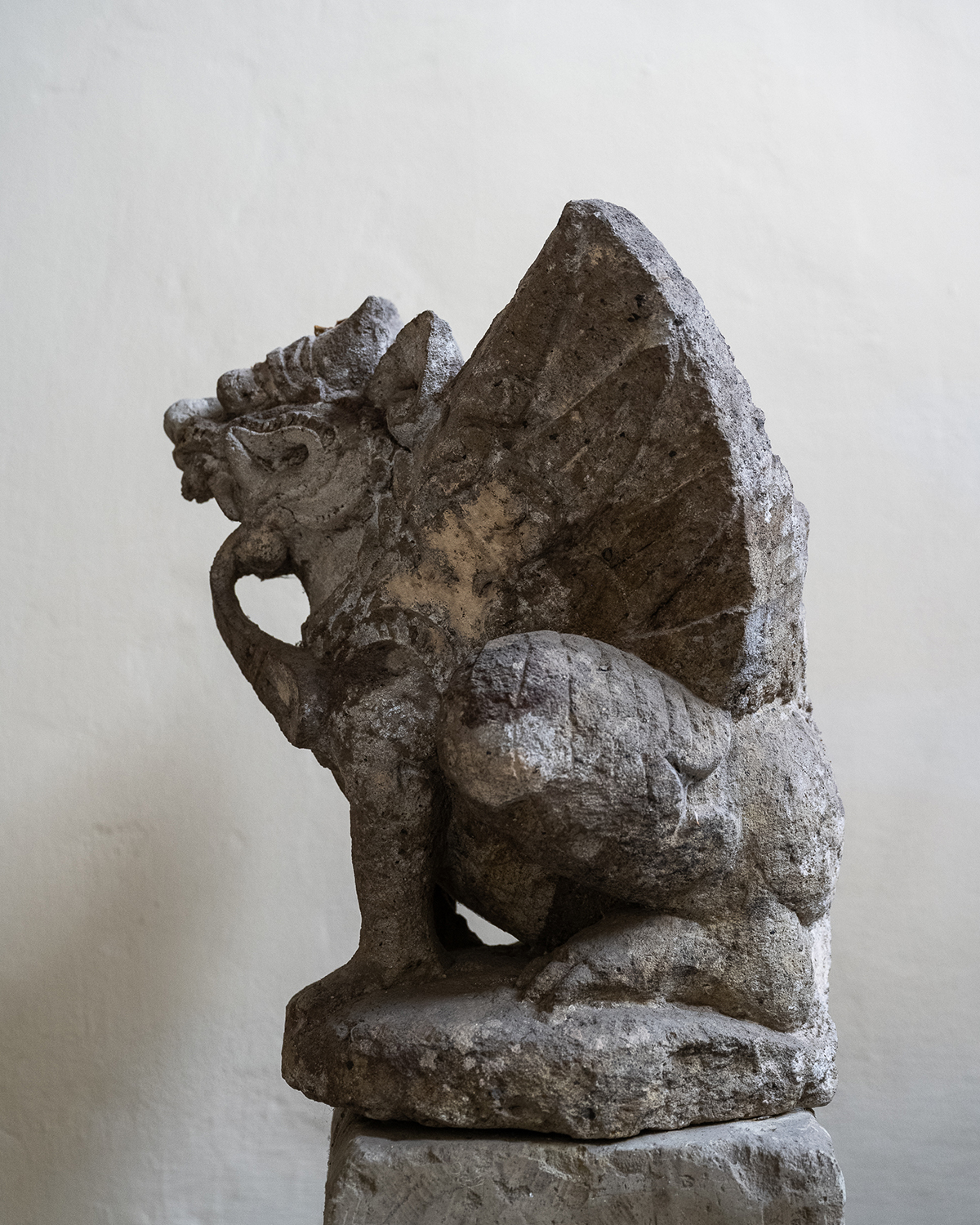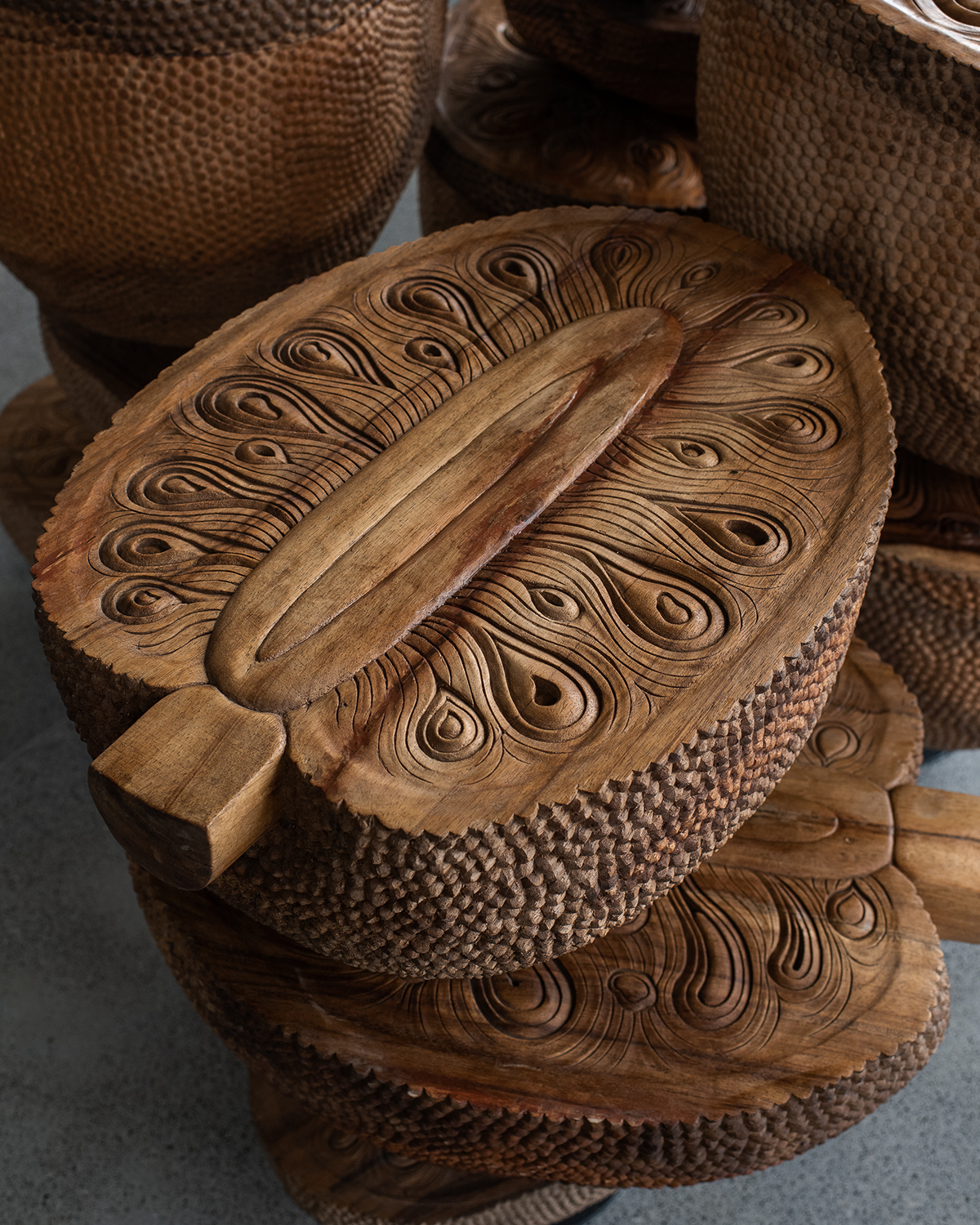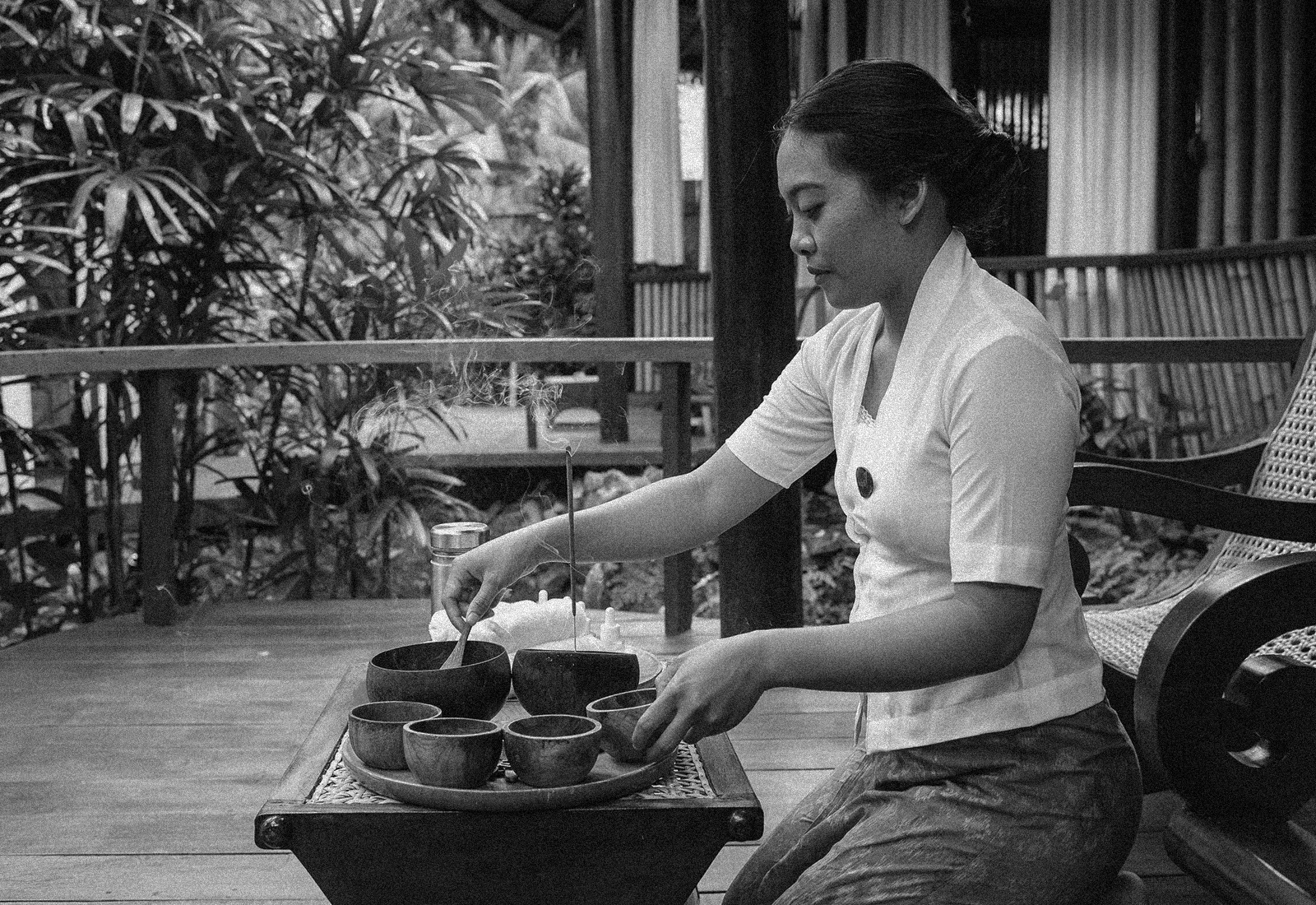INSPIRATION
Hands That Carry
Heritage: Keeping Culture
Alive in Modern Tourism
In Bali, heritage is not displayed behind glass–it moves through daily life, carried in offerings, rituals, and acts of care. As modern tourism reshapes the island, a quiet movement is restoring authenticity through respect and participation, making sure tradition remains not a performance, but a living rhythm of gratitude.
OCTOBER 2025 • BY THE PUNCH EDITORS
Morning light spills over the rooftops of Ubud, catching the shimmer of golden marigolds and silver trays. Along narrow village lanes, women in lace kebaya walk barefoot, balancing baskets filled with rice, petals, and incense upon their heads. Smoke curls gently toward the sky, carrying whispered prayers to the unseen. Each step feels deliberate, graceful, rooted in something older than memory.
Tourists pause to photograph the procession–a quiet moment framed by banyan trees and temple gates. Yet for those who live here, this is no performance. It’s a conversation with the divine, a ritual that orders the day and preserves the harmony between people, nature, and spirit.
Across the island, daily offerings appear at doorsteps and shrines–small woven baskets filled with rice, flowers, and incense. Each color and placement holds quiet meaning, a reflection of gratitude and balance. These gestures are less about religion than about honoring life itself.
Culture in Bali has always been alive. It moves through hands that create, feet that dance, and hearts that give.
Guided by the philosophy of Tri Hita Karana–the harmony between humanity, the environment, and the divine–every act of daily life is both art and offering.
But as the island welcomed the world, its most sacred expressions began to shift.
Ceremonies turned into itineraries, and dances once performed for gods now unfold before crowds with cameras. The rhythm of devotion risks being lost to the pace of tourism.
And yet, beneath the surface, quiet guardians continue their work. Families, communities, and cultural leaders have found ways to keep heritage intact–teaching, creating, and reinterpreting without losing essence. The balance between preservation and participation has become a new art form of its own, defining the future of meaningful travel across the island.


Across Bali, a wave of conscious tourism is emerging–one that protects heritage not by isolating it, but by inviting understanding.
In traditional villages, travelers are welcomed into family compounds to learn the subtle art of weaving janur leaves or shaping clay into ceremonial vessels. At dawn, they join locals at the market to choose flowers for offerings, learning the meanings of color, texture, and scent.
Cultural centers around Ubud, Sidemen, and Tabanan now host open-air workshops where elders teach the forgotten languages of dance, gamelan, wood carving, and herbal medicine. In these spaces, visitors become participants, not spectators–learning that heritage is not static, but living, breathing, and evolving.
Sustainable stays across the island are also redefining hospitality through cultural integrity. Many use traditional architecture built from bamboo and reclaimed wood, their spaces designed to align with the rhythms of nature. Meals are prepared with produce from nearby farms, ceremonies are honored with intention, and the stories behind every handmade textile or carved door are shared with care.
In this way, modern tourism is becoming a medium for preservation. The island’s greatest luxury is not opulence, but authenticity.
Stay long enough, and you’ll begin to recognize the rhythm: temple bells at dawn, the scent of frangipani drifting through courtyards, the faint hum of gamelan echoing over the rice fields. Culture here doesn’t sit still–it breathes.
To keep it alive, both hosts and travelers must learn to move with it. Authenticity cannot be arranged; it must be nurtured through respect, curiosity, and continuity. True preservation means allowing tradition to evolve naturally–carrying forward what matters while embracing what changes.
Each offering placed at a doorway is more than ritual–it’s a renewal of harmony. For the Balinese, it’s a way of saying thank you to the world. For visitors, it’s a reminder that travel can be more than consumption–it can be communion.
Because in the end, these hands that carry heritage are carrying something far greater than beauty. They carry belonging. They carry balance. And through them, the heart of Bali continues to beat—quietly, endlessly, into the future.

GETTING INVOLVED
Visit Participate in Cultural Workshops
: Join village-led programs across Bali where locals teach traditional crafts, dance, and cooking. From offering-making in Ubud to natural dye workshops in Sidemen, these experiences help sustain community livelihoods while preserving authentic knowledge.
Stay in Stay in Locally Rooted Accommodations
: Choose guesthouses or eco-retreats that integrate Balinese design, rituals, and partnerships with surrounding communities. These stays often host ceremonies, support artisans, and reflect the island’s deep respect for nature and tradition.
Support Local Artisans: Visit craft collectives and small family-run workshops producing handwoven textiles, silver jewelry, or wood carvings. Purchasing directly from makers sustains their craft and keeps traditional skills alive for future generations.
Be a Respectful Guest
: When visiting temples or ceremonies, dress modestly, ask before photographing, and follow the lead of your hosts. In Bali, reverence is the highest form of participation.
EXPLORE THE PUNCH

